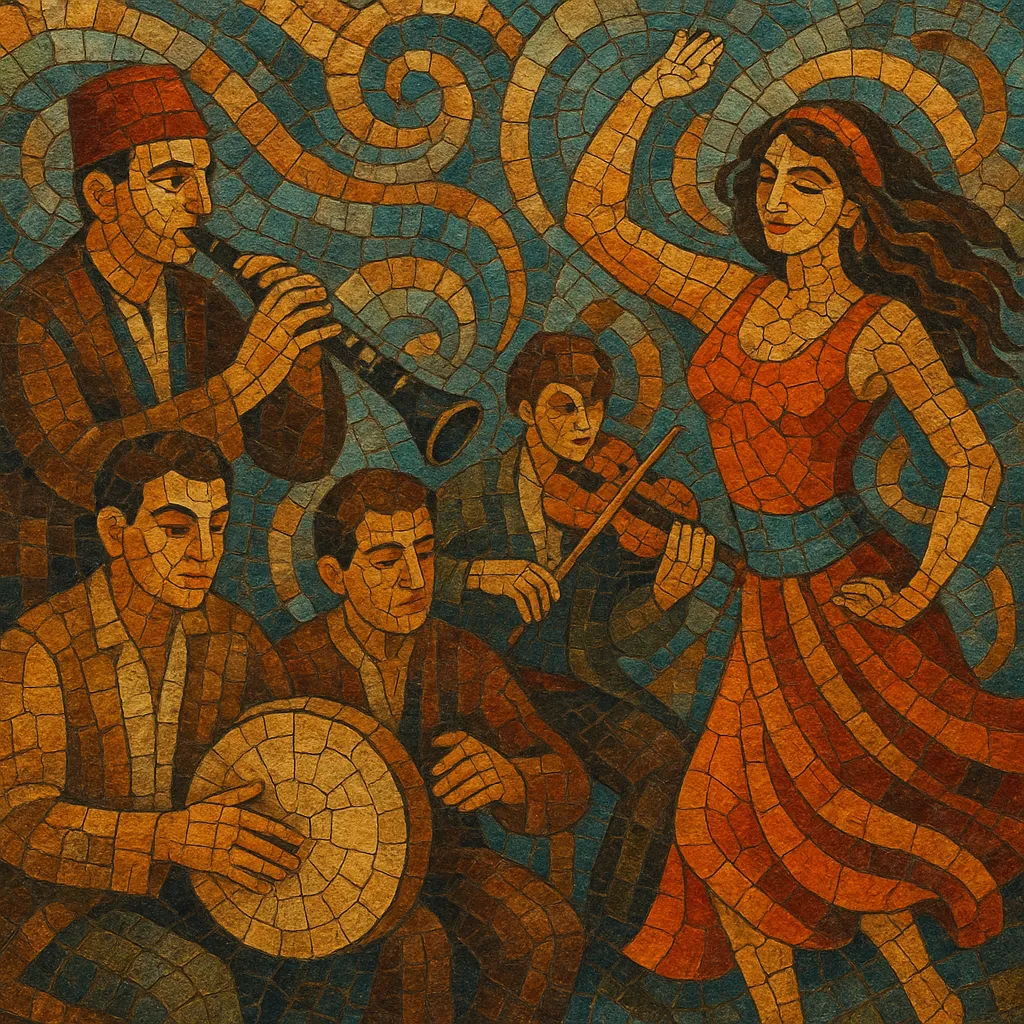Oyun havası (literally “dance tune”) is a broad Turkish term for lively, groove‑driven pieces played for social dancing at weddings and festive gatherings.
It is most closely associated with clarinet‑led urban/Thracian (Rumeli) and Turkish Roma (Roman) ensembles, as well as rural zurna–davul bands. Typical meters include the asymmetrical 9/8 “aksak” (especially the karşılama groupings 2+2+2+3), alongside 2/4 or 4/4 çiftetelli and occasional 6/8. Melodies often follow the makam (modal) system, with ornamented, vocal‑like phrasing and exuberant percussion patterns that keep dancers moving.
Instrumentation commonly features clarinet, davul (bass drum), darbuka/tef (frame drum/riq), zurna, violin, kanun, ud, cümbüş, and bağlama. In urban settings, taksim (improvised preludes) may introduce the tune before the main dance sections. The overall feel is festive, flirtatious, and highly rhythmic, encouraging call‑and‑response energy between musicians and dancers.
Oyun havası refers to danceable tunes embedded in the social life of Anatolia and Ottoman urban centers. While village ensembles centered on zurna–davul had long provided music for processions and outdoor dancing, the 19th‑century spread of Western woodwinds—especially the clarinet—into Ottoman art and popular musics helped shape the urban oyun havası sound.
In the late 19th and early 20th centuries, Thrace (Trakya) and Istanbul became hubs for Turkish Roma band traditions. Clarinetists adapted makam melodies to spirited 9/8 karşılama and sensual çiftetelli grooves, supported by davul and darbuka. This wedding‑circuit repertory evolved into a shared dance vocabulary across Turkish, Roma, and neighboring Balkan communities.
Asymmetrical meters (9/8, 7/8, etc.) and dance forms circulated throughout the Balkans and Aegean, creating overlaps with Greek karsilamas and urban café‑aman traditions. Oyun havası thus absorbed and contributed to a wider Eastern Mediterranean dance culture, while retaining distinct Turkish modal and rhythmic identities.
From mid‑ to late‑20th century, master clarinetists and ensembles recorded classic oyun havası sets, bringing regional styles (especially Thracian Roma) into national media. In the 1990s–2000s, world‑music interest spotlighted virtuosi and modern bands that fused traditional dance tunes with jazz, funk, and pop arrangements, further popularizing the genre beyond Turkey.
Oyun havası remains a staple of weddings and festive events across Turkey. It also permeates Turkish pop, television soundtracks, and belly‑dance repertoires, while contemporary ensembles continue to reinterpret the style with both traditional acoustic line‑ups and modern production.


